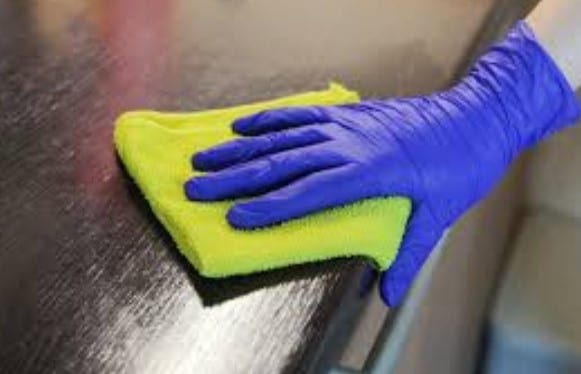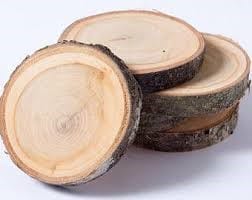Wood is hygroscopic which means it can soak up and retain water even when it is already dried or seasoned. This is not good for lumber, furniture or trim. And when wood starts to retain moisture, it falls prey to mold.
Mold and mildew are health hazards.
It can release spores which will cause respiratory illness and other dangerous conditions.
If you are not careful, you and your family can be at risk. If you suspect that you have wet furniture then you must suspect mold growth. Here are ways to deal with mold on wood.
Dealing with white mold on wood
White mold is one of the most common types of fungus that affects homes and offices. White mold can cause illness and can spread without any visible signs on wood. It is important to remove the white mold as soon as possible with the following steps.
Choose a cleaning solution
You will find a number of effective commercial products that can help you solve mold problems on wood. Just first make sure the cleaning solution you intend to use fits the situation.
If you are dealing with finished wood then chances are mold is just above the surface of the wood so you need to clean the surface to remove the mold.
If the mold is established below the surface of the wood which is common in unfinished wood, you need a solution that will penetrate the surface and kill mold. The following are some of the most effective treatments to consider.
Removing mold from finished wood or painted wood
- A mixture of household detergent and water
- Distilled vinegar
- Baking soda (1/2 cup baking soda, 1 cup water, 1 tbsp. mild liquid detergent)
- Borax solution (1 gallon of water to 1 cup of borax, or 1 part borax to 16 parts water)
Removing mold from wood – unfinished wood:
- Rubbing alcohol or denatured alcohol
- Borax Solution (1 gallon of water to 1 cup of borax, or 1 part borax to 16 parts water)
- Bleach-Detergent Solution (Recommended by the US Forest Products Laboratory – 1 part household detergent, 10 parts bleach, and 20 parts water)
Keep in mind, never mix bleach with a product that contains ammonia. It will create toxic fumes that can cause serious illness or death. Bleach only kills mold spores that are on the surface of the wood and not deep down.
Put on Protective Clothing and Make Safety Precautions
Wear a mask, gloves, glasses, and coveralls when dealing with mold. These can stick to your clothes and hands or you might inhale the spores which can be dangerous to your health.
Depending on the severity of the cleaning solution that you chose to wear a respirator or air mask, that is adequate against mold spores.
The EPA recommends an N95 mask or equivalent, rubber or nitrite gloves and safety goggles that do not have air vents in the sides. Work in a ventilated room. Open windows, doors, and fans to reduce the accumulation of dangerous fumes.
Apply the Cleaning Solution and Scrub
1 – Apply the cleaning solution that you picked out.

Source: https://www.maidbrigade.com/house-cleaning-tips/how-to-clean-mold/
Test the solution in a small, hidden area of the wooden furniture. Place the solution in a spray bottle and spray it on a clean rag, a soft brush or a scrubbing pad. For finished wood, do not use a brush unless you intend to refinish the surface after removing mold.
Spray the solution to the moldy area; it should be enough to cover the mold. Too much solution can add to the dampness of the wood. Allow the solution to sit for a few minutes. Afterwards, scrub the area in a circular motion with the rag, soft brush or scrubbing pad.
2 – Use a disposable towel you can disinfect with bleach later, wipe the area to remove the excess.
Repeat the steps until you have completely removed the mold from the surface of the mold

Source: https://www.homestratosphere.com/paper-towel-alternatives/
3 – If the mold appears to be established deeper into the wood you need to lightly sand the area. Sand the area while it is still damp to prevent mold spores from spreading through the air.

Source: https://www.wikihow.com/Wet-Sand-Wood
4 – After you have removed mold from wood, clean up the area.
Dispose of anything that has come in contact with the mold or cleans it with a proper detergent

Source: https://www.amazon.com/BLACK-GARBAGE-TRASH-INDUSTRIAL-GALLON/dp/B000Y3PPK8
5 – Let the wood dry by keeping in a warm, dry area with good ventilation. Use a dehumidifier inside a room.

Source: https://homeguides.sfgate.com/use-dehumidifier-cool-bedroom-25387.html
After the wood has dried, check for any signs of mold or if the piece still smells moldy. Repeat the process if you spot any mold left on the wood.
Conclusion
Mold on wood should never be overlooked. You must remove all signs of mold, clean and dry wood completely before use. Mold can cause severe respiratory illness and can even cause death if not handled soon.







